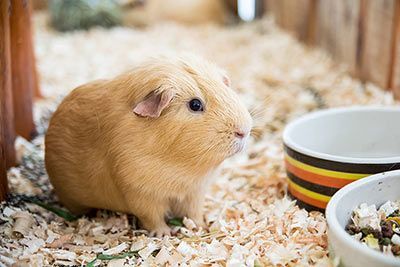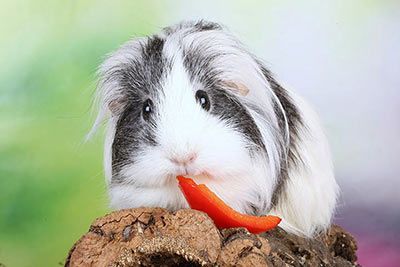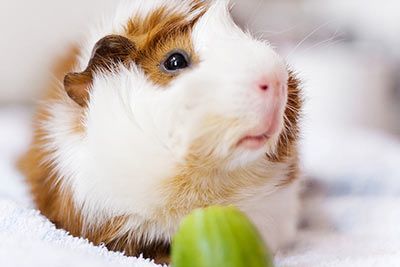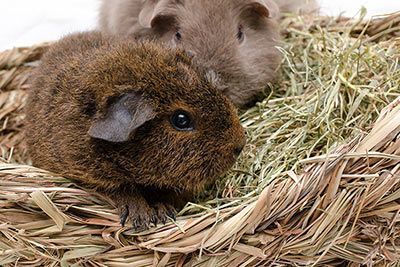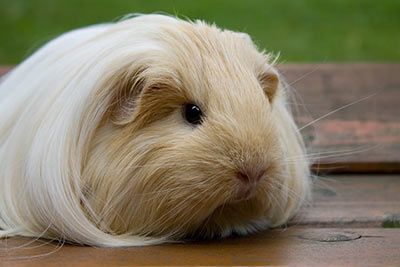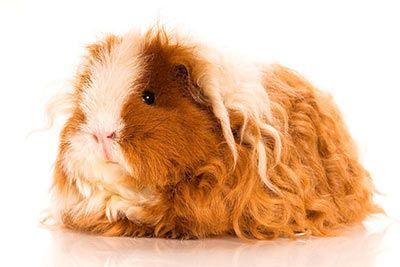Guinea Pigs: Cage and Exercise
Here, you find useful information about keeping guinea pig species-appropriate.
This article will tell all you guinea pig fans how to keep your pets happy. First thing’s first: no matter how big a cage is, it’s never big enough and can never replace exercise outside the cage.
Please note: guinea pigs don’t like being picked up. They freeze when they’re scared, which we humans mistake for calm contentment.
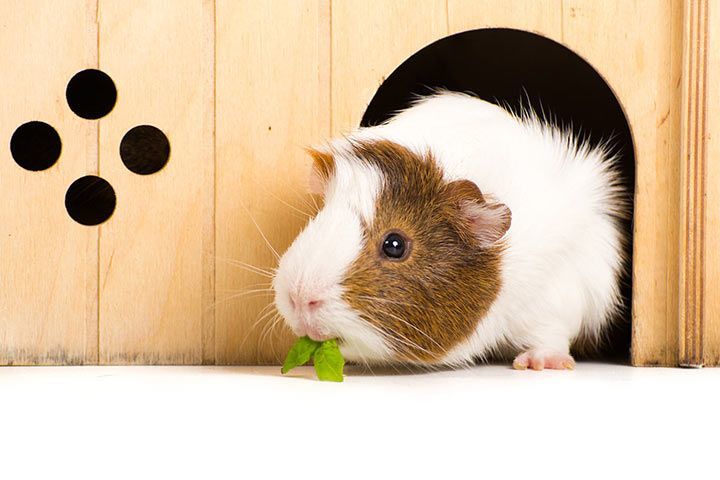
How to Keep Them
Guinea pigs are sociable animals, so should never be kept alone. You should keep at least two, or even better, four or more. Females usually get on very well but males can be harder to keep so not ideal for beginners. If you have several females, you can introduce a castrated male. Ideally, all guinea pigs should be around the same age.
The Cage
• Size and Location
Many people assume that animals can be happy in a small cage if you give them enough love. This is - sorry - cruel and has nothing to do with love. Guinea pigs need a large cage and exercise area that they can use on a daily basis.
Pet stores will often claim that their cages provide “plenty of room”. However, these cages usually don’t even meet minimum size requirements. A cage that is too small is very unpleasant for the animal, as they’re naturally so lively and active, and love moving around. Cages with plastic trays at the bottom (for easier cleaning) and metal bars at the top without a plastic coating are ideal.
You could even build your own cage with a little skill. The best thing about this: you can decide the cage’s size for yourself, and become a “cage designer”.
Checklist
- At least 48 x 32 inches (120 x 80 cm) for max. two animals
- No draft
- Not too close to the heating
- Not directly next to the window
- Not in your bedroom
- No perfumes, alcohol, smoke
- No TV
• Cage Interior
The perfect cage ![]()
- Cork or earthenware pipes as a base
- A second floor will increase the cage’s floor area
- Twigs, roots
- Wooden bridges, wooden tunnels
Not like that! ![]()
- Dead ends - tunnels with only one end
- Wheels
- Steep ramps or ladders
- Salt or mineral licks
- Too many things - this reduces the area inside the cage
Exercise and Run
Anyone buying a large cage thinking that their guinea pigs won’t need any additional exercise is sorely mistaken. Even if the animals are allowed to wander around for three to four hours each day, they still have to sit in their cage for the rest of the time, so 20-21 hours.
The best solution is a run that’s directly connected to the cage (like a small corner of the living room). The animals can then decide for themselves when they want to explore. This is very important, as they’re also active at night - and who is going to get up in the middle of night to exercise their pet?
The right run:
- At least 22-32 square feet (2-3 square meters)
- Soft, padded tunnels
- Cardboard boxes (with two entry/exit holes)
Be careful with:
- Houseplants (could be poisonous)
- Electrical cables (they love to nibble cables and they can cause electric shocks)
- The kitchen (sharp objects)
- Closets and cabinets (keep closed)
- Cleaning products (toxic)
If you have an outdoor run in the summer, make sure it’s in the shade.



